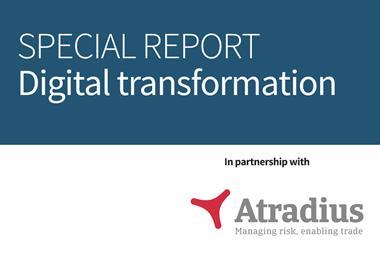How effective data integration makes sense of complexity and takes risk management into a new era

The world’s economic and geopolitical landscape has not seen the current level of volatility for decades.
As new risks emerge, often moving from the outer fringes of possibility to the top of the agenda, building partnerships and harnessing the power of data will be the key to mitigating the risks that lie ahead.
There is a need for joined-up thinking, drawing on deep expertise, as never before, as we face an almost relentless conveyor belt of disruptive issues.
If the insurance industry and its major corporate customers embrace the connectivity of risks together, they can shape their own destinies.
Global interconnections
The major disruptive threats have been almost relentless. No sooner did the world start to emerge from the ravages of Covid-19 then another once remote risk almost immediately asserted itself.
The war in Ukraine also brings home the connectivity of risk with the disruption to energy markets forcing up prices around the world, causing a major cost of living crisis, accompanies by crippling food shortages in many developing countries.
It also shows how closely the three elements of Environmental, Social and Governance (ESG) strategies are connected.
The energy crisis has prompted a reassessment of the retreat from fossil fuels. Businesses have been forced to respond to the complex legal and reputational risks of multiple sanctions regimes, drawing D&O cover into this increasingly volatile mix.
It has also been accompanied by the unprecedented movement of millions of refugees across Europe, which requires constructive responses from governments and businesses and has the potential to foster social unrest.
Intelligent claims management
Where risks are connected, so the solutions are potentially connected too. And the thread that connects the solutions is data inside and outside a company’s environment and the increasingly powerful tools of artificial intelligence.
The combination of strategically embedded – and connected – goals, such as ESG, and investment in data and AI transformation is helping insurers better manage claims.
Today’s progressive insurers focus on liberating claims data by breaking down internal silos and leveraging the data insights. There has always been a close connection between claims and underwriting, but data and analytics makes it more meaningful than ever.
But data in the abstract is only of limited value. It has to be viewed, analysed and applied in the context of the business itself.
The expectation today is that the modern, data-enabled claims department is at the forefront of risk mitigation.
After all, the predictive power of claims data is nearly unlimited.
By working with their insurers, risk and insurance managers can leverage their data to enable them to present their boards with optimised risk mitigation and transfer strategies.
Unpicking supply chains
Supply chains epitomise the connected world we live in and extended supply chains mean greater risk exposures.
Having the ability to look up and down supply chains, using transparent and comparable data is now essential, especially when considering the overlay of ESG strategies.
Managing a global supply chain is incredibly difficult. Disparate technology platforms that do not integrate easily add further layers of complexity. When sharing data across platforms becomes a hinderance, supply chains can stall.
The advances in analytics and digital technologies enables insurers to identify patterns previously hidden in claims data.
This gives risk managers a true overview of risk and the full extent of potential liabilities which will help shape innovative responses, such as using alternative risk transfers, structured fronting solutions and virtual captives, backed by integrated risk engineering and high quality advisory services.
Risk managers need to renew their focus on the unexpected and once distant risks to understand how their business processes and decisions are interconnected.
Doing so will make it easier to examine and plan for contingent business interruption and potentially reduce disruptive and costly events outside the company’s control.
Connecting the dots
Fragmented data should be yesterday’s problem as top class data mining, integration and analysis provide powerful solutions, drawing the thread of data connectivity between corporates and supply chains ever tighter.
It can also underpin the development and deployment of meaningful ESG strategies where each element informs, supports and enhances the others.
Connect the data and you connect the solutions, from risk identification, through mitigation to effective claims management.
Marc Scheidegger is Global Chief Claims Officer at Swiss Re. Matt Madsen is Vice President and Claims Practice Lead at Genpact.














No comments yet